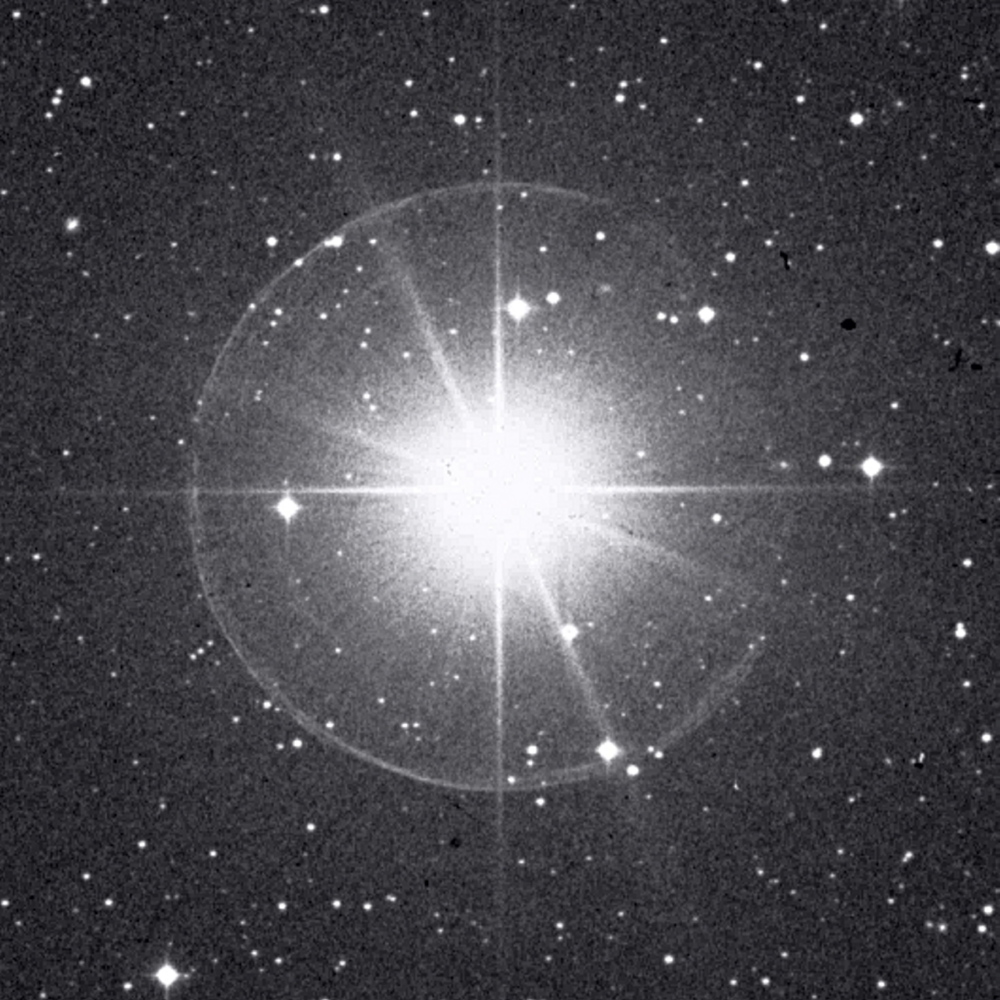On fall nights Hercules is tumbling shoulder-first toward my driveway.
To find him, you look for the bright star Vega, which is west of overhead in the evening this time of year. A bit farther on, approaching the horizon, there’s an Arkansas-shaped trapezoid of four stars, which is the Keystone of Hercules. In myth imagery, this is his torso, basically upside down, or head over heels from our frame of reference. In ancient times this star figure was known as the Kneeler. Later, in Roman times, it came to be called Hercules.
Extending from each of the four joints of the Keystone are stars that outline his arms and legs. At roughly the top, a knee is pinning the head of Draco, the Dragon, whom Hercules killed to get the golden apples of the Hesperides, the original daughters of darkness.
Off the lower part of the Keystone are his shoulders. The magnitude 2.8 star off the lower right corner is known as Kornephoros, which means “club bearer.” Off the left, or southmost corner is Sarin, slightly dimmer at 3.2 magnitude. Hercules is said to be raising his club with his right arm extending from Kornephoros and wearing his lion skin over his left arm, extending from Sarin. Past his shoulders, this star imagery is kind of hard to pick out.
In astronomy-speak, Sarin is a blue-white subgiant star. In fact, it’s not one star at all, but two stars closely in line with each other. They’re not connected gravitationally, but separate stars coincidentally in our line of sight. Anyway, from our point of view — and in simplified scientific descriptions — it’s one star, relatively close to us 79 light years away.
Sometime decades ago, Sarin became my main point of orientation in the summer sky. I can’t remember how or when this happened. On June evenings it’s high enough in the east to see over my firs, and I watch it trail slowly westward all summer. By nightfall in late October it has dropped behind my western tree line. All winter I wait for it to return.
On clear nights in August and September, I always stop to look at it, either sidelong while I’m walking up the driveway, or through binoculars or even in my little backyard telescope.
When I casually look up, it has a weird way of disappearing in my eyes’ blind spot. I guess there must be something unusual about its light, because to see it, I have to look at it peripherally. Most other stars don’t pose this problem. With Sarin, the further my gaze averts, the more I see, but the less directly the light strikes my eye. It’s a dusty-looking, very pale yellowish fire. In binoculars it hardens into a direct gem-spray like all stars seen through a lens, and in the telescope, it’s a white, lonely, faintly icelike crystal.
It’s a disquieting, yet familiar kind of light. To my mind, the known sky maps outward from Sarin.
And yet, even though it’s the central peg of my own backyard cosmography, beyond marking Hercules’ left shoulder Sarin has no story of its own. The origin of its name is unknown. As far as the star etymologists can figure, the word “Sarin” first appeared in the Skalnate Pleso star atlas created about 70 years ago by the Czech astronomer Antonin Becvar. But where Becvar got it (along with 11 other strange, untraceable names), no one knows. The Skalnate Pleso, which sounds like a phrase out of a science fiction novel, is the astronomical observatory in Slovakia where Becvar worked.
Your imagination of course can run wild with fantasies on Becvar’s possible channels of information, given what regular exposure to starlight can do to your mind. Sarin has appeared to me in dreams with dazzling, dusty brightness. I’ve also envisioned it as a steady white combustion partly obscured by a disk of dust. No disk, however, has been detected by astronomers.
I wonder what it’s like up in the vicinity of Sarin. Since at least Plato’s time, and apparently much longer, people’s imaginations have been gripped by the sense that our origins are in the stars. Even now some scientists think life came to Earth on comets. In Plato’s myth, the fixed stars were created originally as divine, eternal beings. Then when we sentient beings were created, each soul was assigned to a star. Sentient beings, he says, are in a process of being born into material bodies on Earth. Those who live well return to their stars of origin. Those who do not live well suffer … a return to Earth.
It’s hard to believe, as the biologist Lewis Thomas observed late last century, that a structure as complex as consciousness would simply dissolve into nothing, as though it had never existed. Nature just does not abandon complex structures like that. It tends to transform them, like ice crystals transforming into water or supernova jetsam transforming into stars. Or starlight transforming into dreams.
Almost everything that’s happening out among the stars is completely and utterly unseen by human beings. The only clues come from starlight. Once it hits the back of your retina and generates signals, you have to wonder what they are and try to place them, somehow. As scientific spectral readings and then interpretations of the data, or as dreams and then interpretations of the images. Something tells me there is a conflation of the two both far out and in deep.
I wonder if I will get back to Sarin, and what it will look like, and what its name will be.
Dana Wilde lives in Troy. His writings on the planets and stars are collected in “Nebulae: A Backyard Cosmography,” available from online booksellers or by contacting the author at naturalist@dwildepress.net. Backyard Naturalist appears the second and fourth Thursdays each month.
Send questions/comments to the editors.




Success. Please wait for the page to reload. If the page does not reload within 5 seconds, please refresh the page.
Enter your email and password to access comments.
Hi, to comment on stories you must . This profile is in addition to your subscription and website login.
Already have a commenting profile? .
Invalid username/password.
Please check your email to confirm and complete your registration.
Only subscribers are eligible to post comments. Please subscribe or login first for digital access. Here’s why.
Use the form below to reset your password. When you've submitted your account email, we will send an email with a reset code.